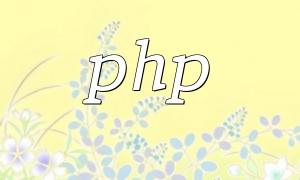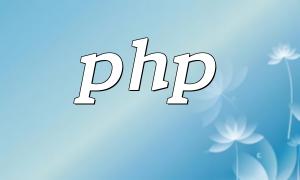In modern web development, JavaScript and PHP are two widely-used programming languages. JavaScript is primarily used for frontend development, while PHP is extensively applied in backend development. Effective data transfer between the two is crucial for building dynamic websites. This article will explore various data transfer methods between JavaScript and PHP and provide best practices for implementation.
There are several common methods for data transfer between JavaScript and PHP:
AJAX (Asynchronous JavaScript and XML) is one of the most widely-used techniques for data transfer between the frontend and backend. It allows JavaScript to communicate with the PHP backend asynchronously without refreshing the page, enhancing user experience by making the page operations smoother.
Here is a simple example of an AJAX request:
$.ajax({
url: 'your_php_script.php',
type: 'POST',
data: { key: 'value' },
success: function(response) {
console.log(response);
}
});
Form submission is another common method of transferring data. JavaScript can collect data from an HTML form and submit it to a PHP script for processing. This method is usually combined with frontend validation to ensure that the submitted data is correct.
<form action="your_php_script.php" method="POST">
<input type="text" name="username" />
<input type="submit" value="Submit" />
</form>
JSON (JavaScript Object Notation) is a lightweight data exchange format that is widely used for communication between the frontend and backend. JSON is easy to parse, making it a popular choice for data transfer.
Here is an example of using AJAX combined with JSON:
$.ajax({
url: 'your_php_script.php',
type: 'GET',
dataType: 'json',
success: function(data) {
console.log(data);
}
});
In most cases, using JSON for data transfer is the best choice. It integrates well with JavaScript, is human-readable, and easy to debug and maintain.
Choosing the appropriate HTTP request method is crucial for efficient data transfer. Use GET requests when retrieving data and POST requests when submitting data. Properly selecting the request method enhances both security and performance.
If your PHP script and JavaScript are hosted on different domains, you need to configure CORS (Cross-Origin Resource Sharing) on the server to allow data transfer between different domains. Proper CORS configuration can help avoid many common issues in frontend development.
By properly using JavaScript and PHP data transfer methods, developers can build more dynamic and efficient web applications. This article has covered some of the main transfer methods and best practices, helping developers apply these two programming languages more flexibly in their projects.









